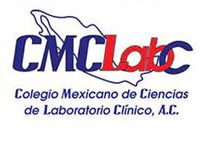Researchers showed that compared with a control group admitted to the hospital for another reason, people hospitalized with an autoimmune disease were more likely to be later admitted with dementia.
“Fundamentally, this is an epidemiology study using the power of big numbers of patients to look at a hypothesis, namely that Alzheimer’s disease may have an autoimmune component, and our bottom line in epidemiological and population terms is that yes, the study supports that hypothesis,” study author Michael J. Goldacre, emeritus professor of public health, University of Oxford, United Kingdom.
It’s important for clinicians to recognize that their patients with multiple sclerosis, type 1 diabetes, rheumatoid arthritis, or other autoimmune disorders may have an increased risk for dementia, said Dr Goldacre.The study was published online March 1 in the Journal of Epidemiology & Community Health.Common Chronic Diseases Researchers used the Hospital Episode Statistics database, which includes clinical, demographic, and administrative information on hospital admissions (including day cases) in England. They constructed retrospective cohorts of patients admitted to the hospital with a range of autoimmune diseases and followed them to see which patients were later admitted with a record of dementia.
The 25 diseases on the list for evaluation included those that are common and chronic and for which there’s an accepted autoimmune component. The list did not include type 1 diabetes because, as Dr Goldacre explained, he and his colleagues had already published a paper that linked diabetes with subsequent dementia.
The researchers also constructed a control cohort of patients hospitalized with various other medical and surgical conditions and injuries.
From April 1, 1998, to March 31, 2012, over 1.8 million people were admitted to the hospital with an autoimmune disease. The number in the different autoimmune groups ranged from 1019 for Goodpasture’s syndrome (where antibodies attack the lungs and kidneys), to 316,043 for rheumatoid arthritis (RA). About 7 million people were included in the control cohort.
The autoimmune disease cohort that eventually had the most dementia cases (48,146) was myxoedema (hypothyroidism). This condition “is quite common in elderly people, particularly women,” commented Dr Goldacre.
Overall, patients admitted to the hospital with an autoimmune disease were 20% more likely to have a subsequent admission for dementia than those without an admission for an autoimmune disease (adjusted rate ratio [RR], 1.20; 95% confidence interval [CI], 1.19 – 1.21).
Of the 25 diseases studied, 18 showed significant positive associations with dementia at P < .05 (with 14 significant at P < .001), including multiple sclerosis (RR, 1.97; 95% CI, 1.88 – 2.07), psoriasis (RR, 1.29; 95% CI, 1.25 – 1.34), and systemic lupus erythematosus (RR, 1.46; 95% CI, 1.32 – 1.61).
The authors noted that by chance alone, only one or two would be significant at P = .05.
However, although significant, effect sizes were small.
“As risks go, it’s a relatively small elevation,” said Dr Goldacre. “Risks start to seem important at the individual patient level when they are about two-fold or over, when the risk is something like doubled.”
Researchers found no notable differences in the RRs for dementia after excluding cases of dementia recorded within a year of the autoimmune disease admission. This suggests that the dementia diagnosis was not the result of being admitted soon after an autoimmune disease admission.
Different Dementias
Investigators subdivided patients admitted with a record of dementia into those having AD and those having vascular dementia.
Of the 81,502 people with an autoimmune disease and dementia, 20,032 had a record of AD and 22,536 a record of vascular dementia. The risk for vascular dementia after an admission with an autoimmune disease was higher (RR, 1.28; 95% CI, 1.26 – 1.31) than the risk for AD (RR, 1.06; 95% CI, 1.04 – 1.08).
“We think that’s probably because these autoimmune diseases are themselves conditions that predispose to atherosclerotic vascular disease,” said Dr Goldacre.
Some autoimmune diseases were associated with an elevated risk for future vascular dementia but not AD. This was the case for RA, where the RR for vascular dementia was 1.16 (95% CI, 1.12 – 1.20) but for AD, it was 0.89 (95% CI, 0.86 – 0.93).
“We might have been tempted to just dismiss the seemingly protective effect — the inverse relationship between RA and AD — were it not for the fact that others have reported on that before, so it’s not an entirely sort of eccentric finding,” said Dr. Goldacre.
The finding helps support the hypothesis that nonsteroidal anti-inflammatory drugs (NSAIDs) protect against AD. “People with rheumatoid arthritis generally take NSAIDs to manage their condition, so if rheumatoid arthritis is at least partially a proxy for NSAID use, the real association may be between NSAID use and a reduced risk of AD,” write the authors.
Since dementia subgroups were not well coded on hospital records, the authors cautioned that the separate analyses of AD and vascular dementia should be viewed with caution.
In analyzing the data separately for men and women, the researchers found that the adjusted RRs for dementia were broadly similar when they looked at individual diseases, but for all of them together, the RR was higher in men than women.
Dr Goldacre pointed out that autoimmune diseases are generally more common in women than men. “It’s often the case that the sex with the lower disease frequency has outcomes that are worse than the sex with the higher disease frequency.”
For example, he said, although women don’t develop myocardial infarction as often as men, they tend to have a slightly higher death rate from it, he said. “I am highly speculative, but that pattern might fit here.”
The researchers also analyzed the data according to time interval between the autoimmune disease and dementia admissions. Most associations remained significant for 5 or more years, although they were generally stronger with shorter time intervals.
Emerging Field
“We certainly are seeing more and more research on the link between AD and the immune system and neuroinflammation,” said Dr Hendrix. “This kind of paper helps show that there is something going on and we need to do more research to really understand it.”
An “emerging” field of research for the Alzheimer’s Association is developing anti-inflammatory agents targeted to the brain, said James A. Hendrix, PhD, director, Global Science Initiatives, Alzheimer’s Association.
“A possible strategy would be to develop a drug that has excellent brain penetration and has brain-specific targets, so it targets the microglia or other cells in the brain that are associated with the immune system and neuroinflammation.”
Another strategy might be to “repurpose” anti-inflammatory drugs and see whether they can affect neuroinflammation with limited side effects. “We will leave no stone unturned with this,” said Dr Hendrix.
Indeed, last summer, the Alzheimer’s Association announced a $7 million investment in clinical trials targeting brain inflammation (see Medscape Medical News’ coverage of the Part the Cloud Challenge on Neuroinflammation).
Dr Hendrix said the association between RA and vascular dementia uncovered by the study was news to him. “That says that we really don’t have a good understanding of the role of the immune system and inflammation when it comes to vascular dementia. For me, that was the one of the things that stood out in the paper generally.”
He outlined a number of “caveats” to the research. For one thing, the authors looked only at hospital records. “These were people who went into hospital complaining of an autoimmune disease or disorder, so it was probably pretty severe to force them to go to a hospital for care,” said Dr Hendrix.
Also, only about half of those who developed dementia were classified as having AD or vascular dementia. “It’s really challenging under the best of circumstances to do a differential diagnosis of dementia,” said Dr Hendrix.
The Unit of Health-Care Epidemiology was funded by the English National Institute for Health Research to build the linked data set. The authors have disclosed no relevant financial relationships.
J Epidemiol Community Health. Published online March 1, 2017. Abstract
Source: MedScape
























































